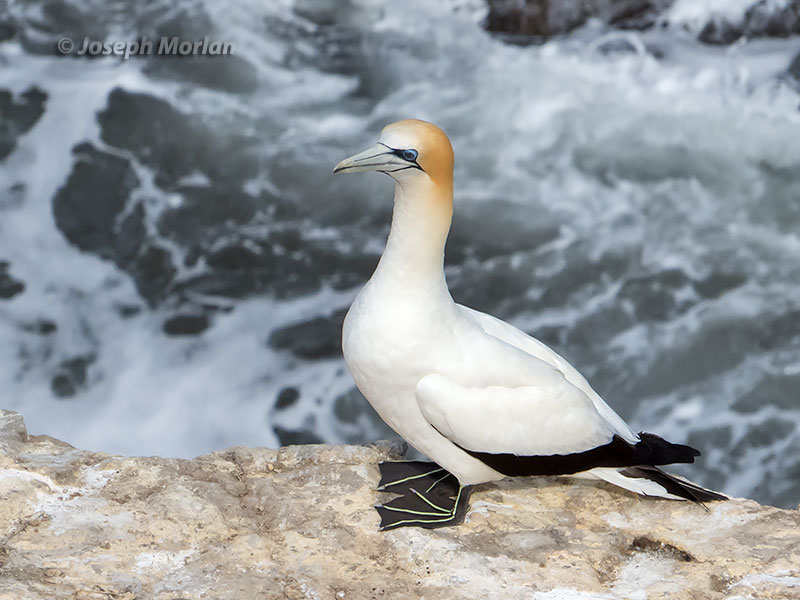
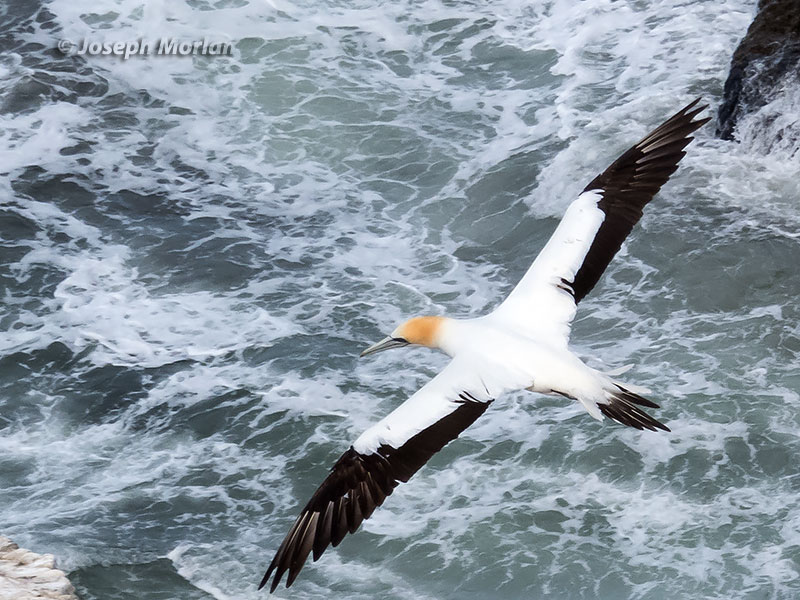
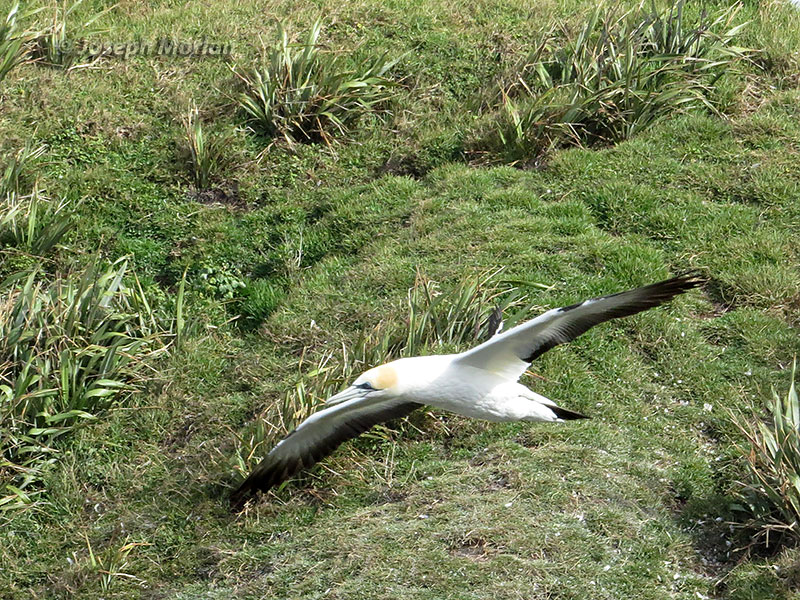
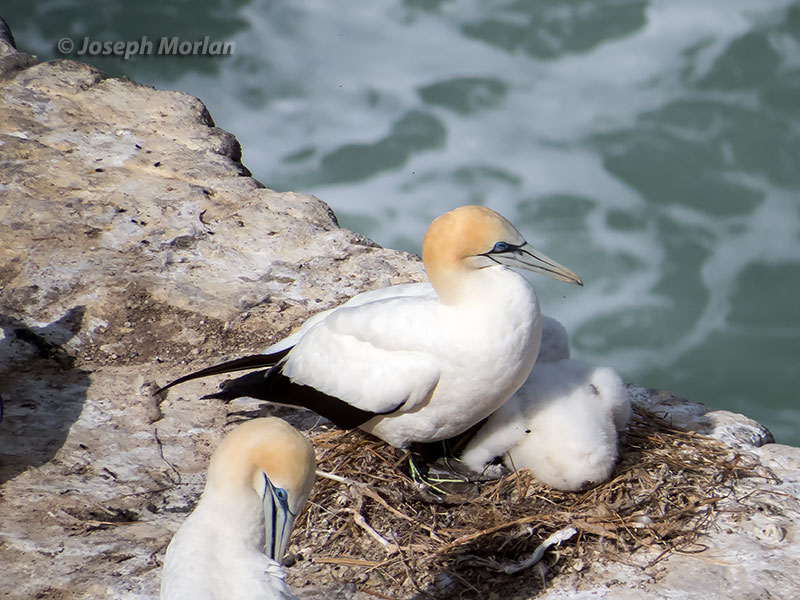
Canon PowerShot SX50 HS (above)
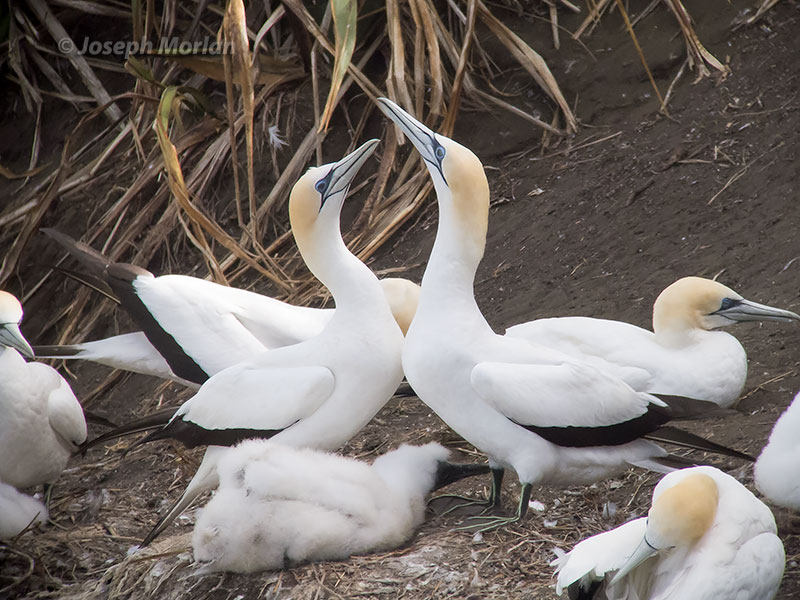
Digiscoped with Panasonic DMC-LX5 | Nikon FS 3 | 30XWA | hand-held, no adapter (bottom).
Note the yellow-green toes contrasting with black webbing and blue eyering of the adults. Most of the immatures migrate directly to waters off Australia before returning to breed after three to six years. This colony was established starting in 1975 when the adjacent colony on an offshore island became overcrowded. Currently about 1,200 pairs of gannets nest on the headlands here from August to March each year. The adults greet each other at the nest by bowing and bill fencing as seen above. Each pair lays a single egg which is incubated between the webbing of the adult's feet. Most of the chicks seemed to be about a third of adult weight which makes them approximately a month old.
These impressive diving birds catch fish by plunging into the ocean. Research by Machovsky-Capuska et al. (2012) has shown that Australasian Gannets have the ability to quickly adjust their visual capacity as they spot fish from the air and then pursue and capture them while flapping underwater.
Formerly classified with the other totipalmate (all four toes webbed) seabirds in the order Pelicaniformes. Genetic analysis (Hackett et al. 2008) has shown Gannets are not closely related to Pelicans but best placed in the order the Suliformes including the Cormorants. The Pelicans turned out to be more closely related to the Shoebill, Hamerkop and Herons.
References:
Carboneras, C., Christie, D.A., Jutglar, F., Bonan, A. & Garcia, E.F.J. (2017). Australasian Gannet (Morus serrator). In: del Hoyo, J., Elliott, A., Sargatal, J., Christie, D.A. & de Juana, E. (eds.). Handbook of the Birds of the World Alive. Lynx Edicions, Barcelona. (retrieved from http://www.hbw.com/node/52619 on 29 March 2017).
Hackett, S.J, Kimball, R.T., Reddy, S., Bowie, R.C.K., Braun, E.L., Braun, M.J., Chojnowski, J.L., Cox, W.A., Han, K., Harshman, J., Huddleston, C.J., Marks, B.D., Miglia, K.J., Moore, W.S., Sheldon, F.H., Steadman, D.W., Witt, C.C., and Yuri, T. 2008. A phylogenomic study of birds reveals their evolutionary history. Science. 320(5884):1763-1768.
Ismar, S.M.H. 2013. Australasian gannet. In Miskelly, C.M. (ed.) New Zealand Birds Online. www.nzbirdsonline.org.nz
Machovsky-Capuska, G. E., Howland, H. C., Raubenheimer, D., Vaughn-Hirshorn, R., Würsig, B., Hauber, M. E., & Katzir, G. (2012). Visual accommodation and active pursuit of prey underwater in a plunge-diving bird: the Australasian gannet. Proceedings of the Royal Society B: Biological Sciences, 279(1745), 4118–4125. http://doi.org/10.1098/rspb.2012.1519
Marchant, S.; Higgins, P.J. (eds.), 1990. Handbook of Australian, New Zealand and Antarctic birds. Ratites to Ducks, vol. 1. Melbourne, Oxford University Press.